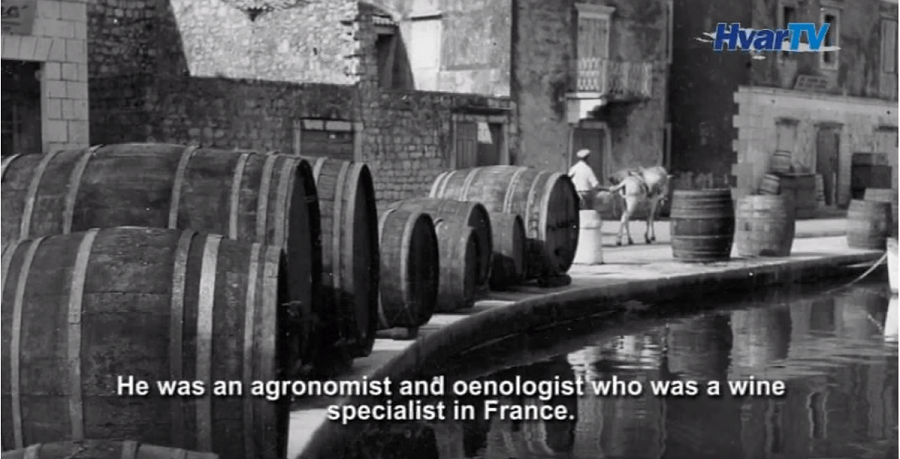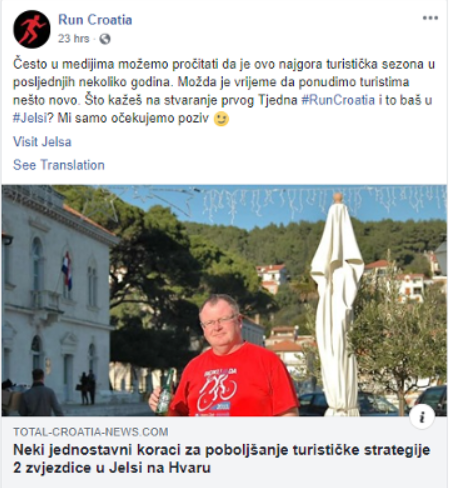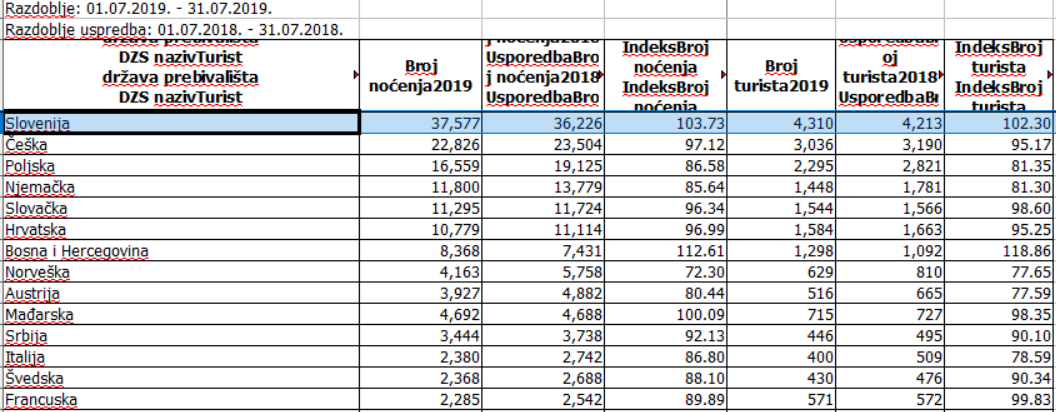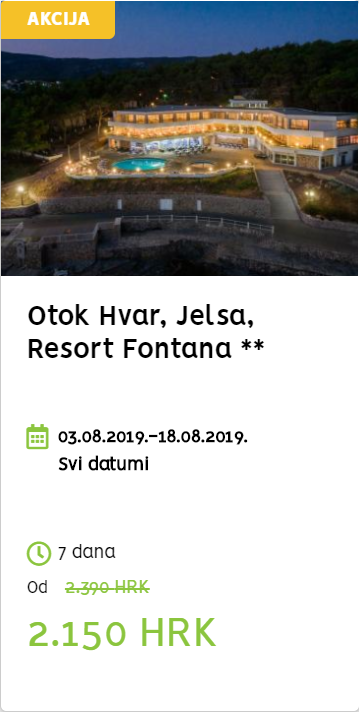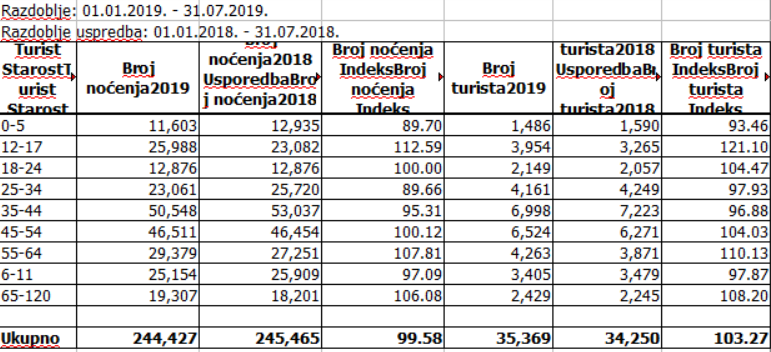Palace Elisabeth, Hvar's First 5-Star Hotel Now Open for Booking
August 10, 2019 - With renovation almost complete, Suncani Hvar Hotels opens bookings for Hvar's first ever 5-star hotel, Palace Elisabeth.
These are exciting times for the island of Hvar.
Last year, Croatia's premier island, which has more UNESCO heritage than any other island in the world and also the birthplace of organised tourism in Europe, celebrated 150 years of the founding of the Hvar Health Society.

And 2019, the 151st year of organised tourism in Europe, is also not without its highlights.
On May 1, after a period of about 20 years of renovation, the oldest public theatre in Europe, reopened on Hvar's main square.
The Hvar Public Theatre opened in 1612 and it has proved very popular since its reopening, hosting plays, concerts, ballroom dancing and a fashion show.
And it is not the only historic building which has undergone renovation in the town centre. The main Arsenal building on the floor below has also been renovated and is functioning as an excellent multi-purpose entertainment centre.
Meanwhile, across the square, another piece of European history is putting the finishing touches to its own luxury makeover.
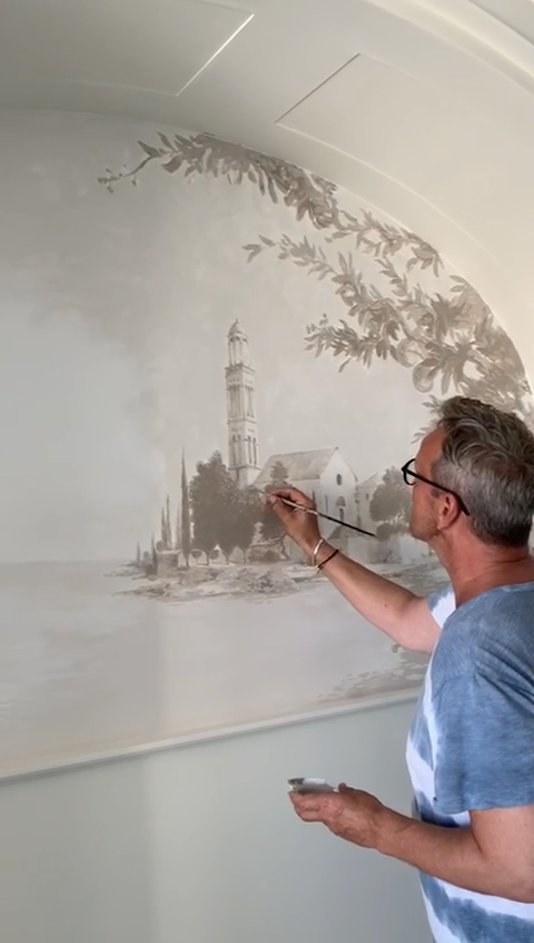
The site which started organised tourism in Europe all those years ago will reopen imminently with a touch of class such as Hvar has never seen before, as Palace Elisabeth, hvar heritage hotel, will open its doors in a few weeks as the first 5-star hotel on the island.
The 45 rooms and suites are now open for booking from September 1 (you can book them here). a fabulous opportunity to immerse yourself in traditional Hvar with modern luxury and some of the finest views on the island. And as you can see from the painstaking work of designer Oto Blaha, there has been no compromise on attention to detail, as he explained in a recent TCN interview.
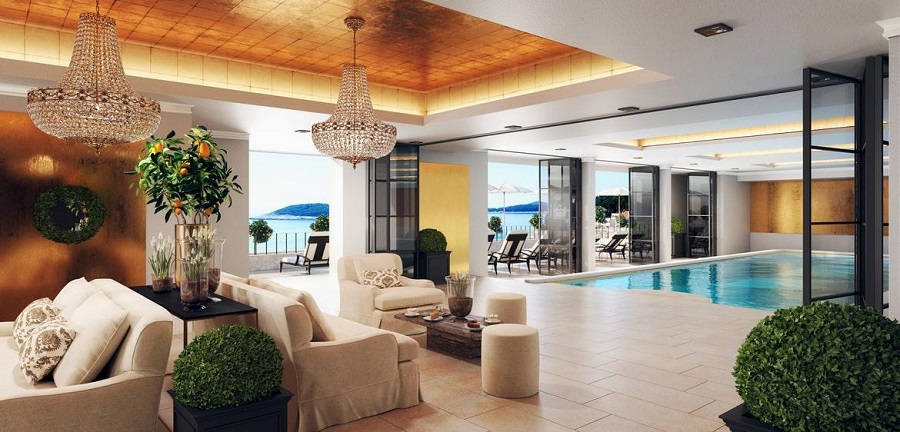
Palace Elisabeth promises to be a fantastic addition to the quality Hvar tourism scene.
To learn more about the island, check out the Total Croatia Hvar in a Page guide.
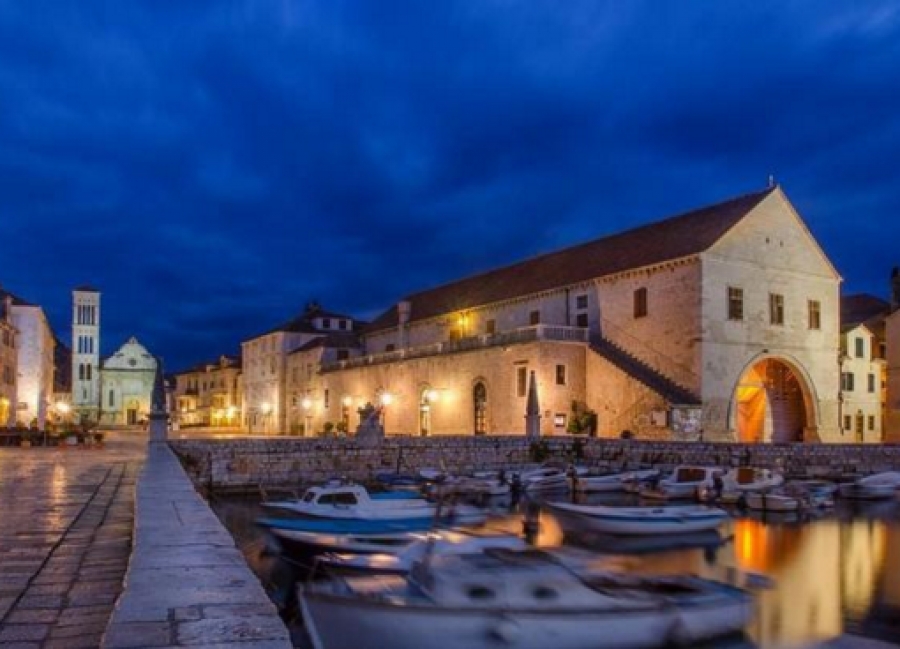
Dalmacijavino Winery Returned to Stari Grad: Home for Hvar UNESCO Gourmet Goodness?
August 10, 2019 - A new chapter for the troubled Dalmacijavino winery in Stari Grad, and a fantastic opportunity to develop the Hvar gourmet story.
When it opened in 1952, it was the most modern and beautiful winery in Croatia. Oenologist, agronomist and engineer Vanja Zanko returned from Provence in 1948 and started to build a new winery in Stari Grad, which was finally completed in 1952.
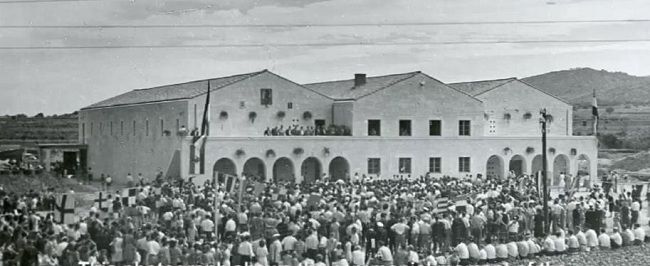
(The opening of the winery in 1952)
After initial glory years, the Dalmacijavino winery fell upon hard times, and it has been sitting unwanted and unused on the entrance to Stari Grad for many years now.
But no longer!
A unanimous decision from the Stari Grad Town Council this week has ensured a brighter future for the building and its surrounding lands, as the town will purchase them and bring the Damacijavino winery and surrounding lands into the ownership of the local authority, which is great news.
Significant investment will be required to restore the winery to its former glory, and while I am not aware of the plans for developing the winery, I would be surprised if it was returned to its original use as a winery. And perhaps there is a much better use for it.
As I wrote recently, Hvar is blessed with so many interesting, high-quality and unique food and wine experiences, that it can quite easily rebrand and expand its image as a food and wine destination immersed in culture (you can read Creating Quality Gourmet Tourism in Croatia: Case Study Hvar here).
(Hvar TV reports on a 2012 exhibition to mark 60 years of the opening of the winery)
Jelsa is the de facto (although unclaimed) capital of Dalmatian wine, Hvar the wine island, whose Mediterranean Diet joined the list of intangible UNESCO heritage in 2013, along with Brac and 7 other places on the Mediterranean. The winery is located on the edge of UNESCO World Heritage Site, the Stari Grad Plain. The location really could not be better.
So why not build a temple of celebration of Hvar's incredible wine story, its Mediterranean Diet, a proper introduction to the UNESCO World Heritage Site of the Stari Grad Plain, and a celebration of the rest of the UNESCO heritage on Hvar, the island with the most UNESCO heritage in the world?
A wine museum, a wine tasting facility, an interactive Stari Grad Plain exhibition, cooking classes and workshops. Plant lavender and immortelle and other Hvar crops in some of the neighbouring fields to showcase the diversity of Hvar's herbal and plant life which contribute to so many products here.
There is plenty of space for a multi-functional facility, including winemaking, under the brand of Hvar gourmet. Olive oil production, honey production, lavender oil production, rakija production - a section to learn how all these processes were done all those years ago, and still today. There will also be EU funding for the right application.
In an age where tourists are looking for things to do on a rainy day, could there be a better option? And not just when it is raining. The creation of a UNESCO Hvar gourmet centre would help to develop the brand, which could be further developed by the numerous food and wine tours on the island.
A fantastic opportunity. Let's see what happens, but whatever happens, the fact that there will be a change of ownership is great news. It comes around the same time that that the Helios Hotel Group, the main hotel provider in the town, is also looking forward to a brighter future, as Valamar looks set to invest to bring them up to four-star standard.
The future of tourism in Stari Grad is looking very bright indeed.
Learn more about Stari Grad with 25 things to know.
Lavender Cheesecake the New Hit at Innovative, Traditional Zbondini
August 8, 2019 - One of the best traditional gourmet stories in Dalmatia goes from strength to strength, as Restaurant Zbondini's lavender cheesecake proves a hit in Velo Grablje on Hvar.
It is a story I have followed for many years, and in era where many are looking for the quick buck serving average food, the story looks all the more impressive.
He, a former employee of one of Dalmatia's most high-profile and enigmatic winemakers, Andro Tomic.
She, the daughter of one of the most hard-working and respected restaurateurs in Hvar Town, Djordje and Danica Tudor at Djordjota Vartal next to the Franciscan monastery.
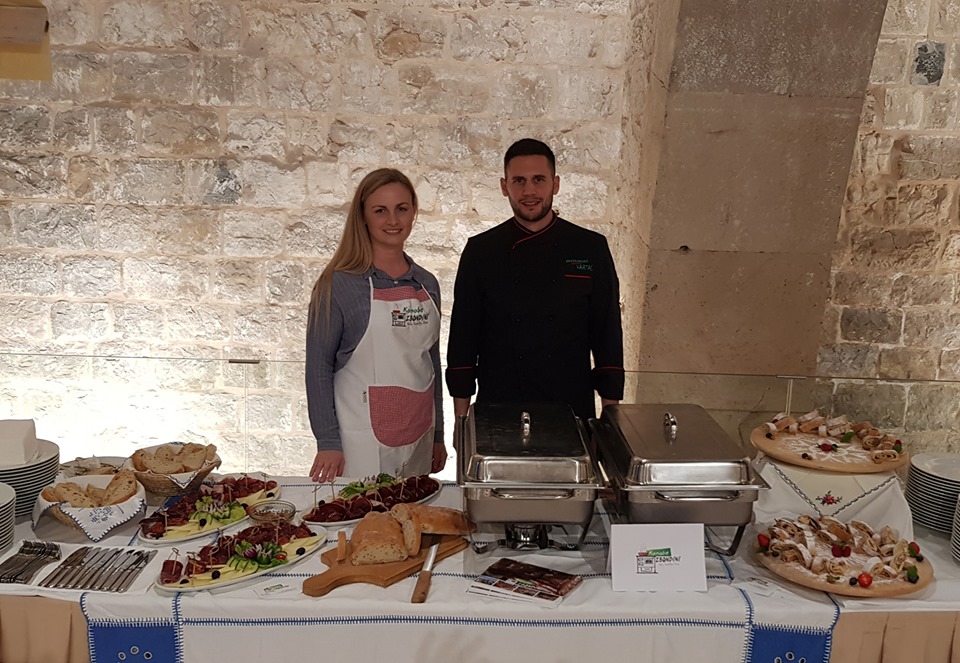
And so when the Tudor family decided to open a restaurant in the ancestral village of Velo Grablje - the lavender village - it was only natural that Cvjetko Tresic and Marija Tudor would join forces not only through matrimony, but also running this new traditional restaurant in an authentic village away from crowds. At the time, back in 2015, I called it the most important new restaurant opening on Hvar in 10 years. You can watch the Hvar TV report on the opening night in the video below.
I need to tell you a little background about the remarkable story of Velo Grablje, a stunning stone village just a few kilometres from Hvar Town and yet a world away. Just a few years ago, it had been reduced to a population of just 5 (including a man called Sinai, after the place of his birth - the El Shatt refugee camp in the Sinai Desert during the Second World War.
The village had been the centre of lavender production in all Dalmatia at one point, but economic emigration and devastating fires (the latest of which was in 2003) hit both the island population and the lavender production. Velo Grablje had reached its lowest point.

And then, slowly, its fortunes began to change. A local NGO called Pjover, comprising mostly of locals with a connection to the village, concentrated their efforts on reviving the history and traditions of the village, and breathing a little life into the tranquil spot.
There was success of many fronts, not least on the football field, and NK Levonda from Velo Grablje won the Forska Liga, the Hvar Football League, in 2011, a triumph which was documented in a documentary by Maja Zrnic - you can see the trailer below.
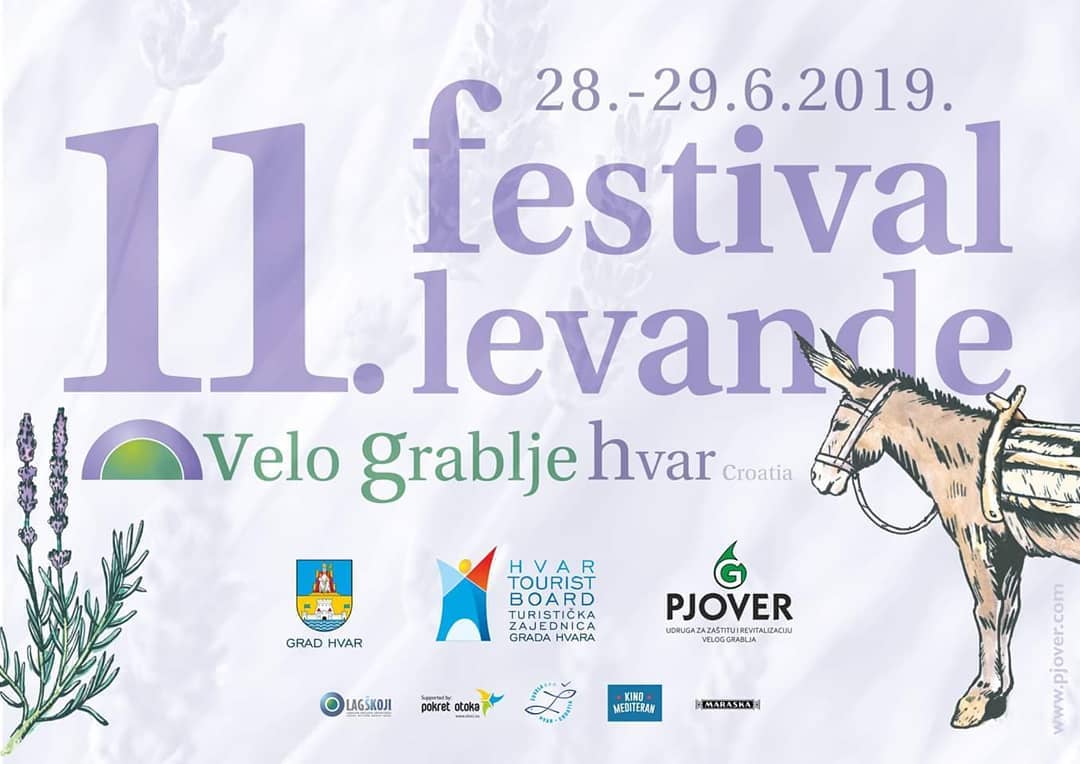
The key event on the social calendar, however, was the lavender festival, which has now taken place at the end of June for 11 years. The festival celebrates the traditions of Velo Grablje with a decidedly lavender flavour - the lavender ice cream was interesting. There is also an opportunity to experience the lavender oil production process.
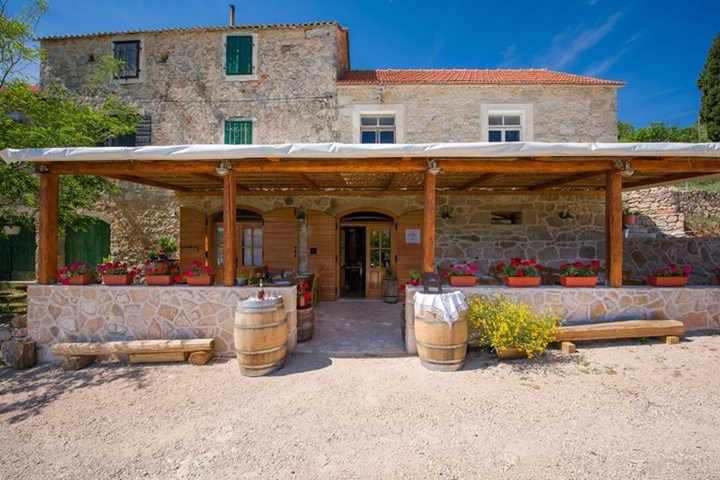
And then, in 2015, Konoba Zbondini opened - and remained open for much of the year. Suddenly there was a focal point to visiting the village for hikers and those on Jeep safari tours.
And the concept of Zbondini was authentic Dalmatia as It Once Was. Traditional recipes, local produce, cooked in the same way as it had been for generations. The restaurant itself was full of authentic momentoes of an era gone by. And with Marija and Cvjetko running the show and passionate about Dalmatian traditions, it was hard to find a more authentic culinary experience in the region.
Not content with just running a restaurant, they started offering cooking courses to tourist via Hvar Tours, so that tourists could not only taste the food, but go with them into the fields to pick the ingredients and then learn about Dalmatian cooking first-hand. It is one of the most popular tours that the agency offers.
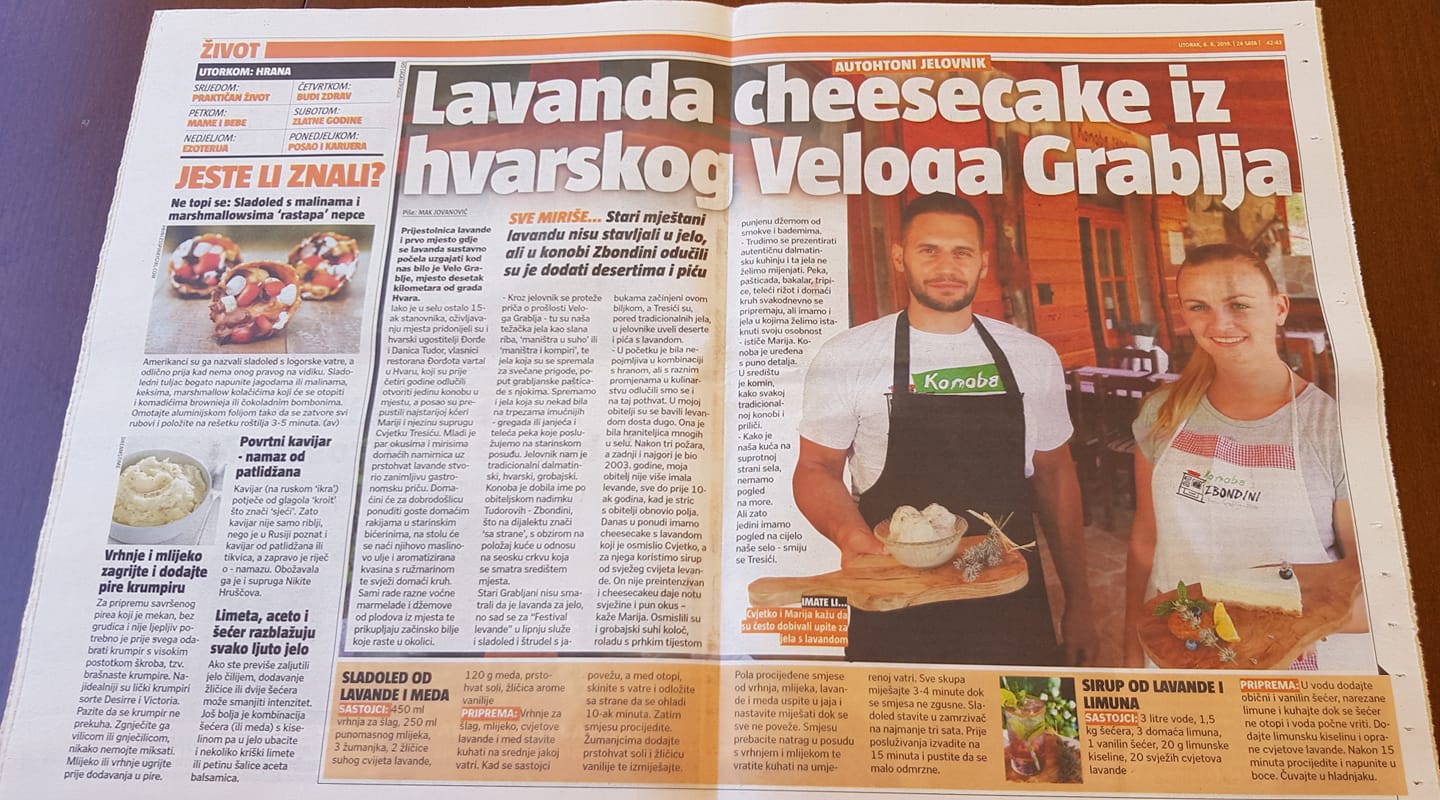
I haven't been to Velo Grablje for a couple of years, and it is a little longer since I have seen the successful young Zbondini couple, but what a joy to see them hit the media with their story this week. And with a new product which is proving quite a hit and has Cvjetko's signature on it and represents the essence of this very special village - lavender cheesecake!
The future of Velo Grablje is in very safe hands, and Zbondini is just one more story of excellence to add to my recent concept to start promoting Hvar as a serious gourmet destination.
You can follow the latest from Konoba Zbondini on Facebook.
And to finish, take a journey back to the Hvar lavender harvest of 1970 - idyllic.
Why International Wine Experts are Heading to Dalmatian Islands
August 4, 2019 - The exciting indigenous grapes on Dalmatia's islands are attracting increasing international interest. Great piece by Kate Hawkings in The Buyer on a visit to Korcula.
When I moved to Hvar in 2003, I had no idea it was a wine island or that, in fact, I had bought a house in the Dalmatian wine capital, Jelsa. I carried on in innocent ignorance for about 7 years until I started researching for the first edition of my guidebook, Hvar: An Insider's Guide.
And then I became fascinated. Not only did Hvar have some excellent winemakers, but the grapes themselves made the Hvar wine story even more interesting. It is said that there are 130 indigenous varieties all over Croatia, and I had no idea that Hvar was so rich in them.
The most famous is Bogdanusa, literally a 'gift from God', but there is also Prc and Darnekusa. I want to say Kuc as well, although from memory this exists elsewhere under a different name.
And then the longer I stayed, the more I discovered, most notably with Jelsa winemaker Teo Huljic, who introduced me to the Mekuja grape (he is the only one to make a 100% Mekuja, just 600 bottles). The following year, he opened one of only 70 bottles of Palarusa, an almost forgotten grape that even some Hvar winemakers had never heard of. Kortolaska is another rare variety only found on Hvar.
The more I looked, the more impressed I became. the islands of Croatia seemed to excel in indigenous varieties - you can learn more about them in Indigenous Wine Varieties on Croatian Islands.
And international wine experts are taking an increasing interest. The most high-profile of these, of course, is Jo Ahearne MW, the first Master of Wine to make wine in Croatia, much of it from Hvar's indigenous varieties.
Jo was featured in a great in-depth piece largely set on Korcula by Kate Hawkins in The Buyer.
Read on to find out why the international wine community is getting excited.
Learn more about the wines of Croatia in the Total Croatia Wine guide.
Little Luxury, Pricey Mass Tourism: TCN Interview with Tportal on Croatian Tourism
August 3, 2019 - Total Croatia News featured in a big article in Tportal today, entitled 'Crazy Englishman from Jelsa' - Guys, snap out of it, Croatia does not have a luxury tourism product and is too expensive for mass tourism. Here is what I suggest' by Damir Petranovic. An English translation.
Seventeen years after he first set foot on the island, the '’crazy Englishman from Jelsa’' - as the locals quickly took to calling him - has given this little Hvar town a real tourism strategy.
"Some Simple Steps to Improve the 2 Star Tourism Strategy in Jelsa on Hvar" is the title of an extensive article published on Bradbury's Total Croatia News (TCN) portal, which easily diagnosed the causes of stagnation and suggested a number of coherent and concrete proposals for a radical turnaround. In an interview with tportal, he explained what he wanted to achieve, but as now a great connoisseur of opportunities, he also addressed the possible implications at the national level.
This Brit has been known for many years as one of the best promoters of Croatian tourism, but at the same time one of the biggest critics of how it is being managed: among the most well-remembered are, let’s say, his devastating analysis of the ‘'Croatia 365’' project or the recent announcement that ‘’there would be no less tourists coming tomorrow if we abolished the Croatian National Tourist Board’’, Still, the positives prevail, and so Bradbury’s biography boasts a series of remarkable ventures.
Firstly, upon his arrival to Hvar, he issued the first complete tourist guide on the island, then realised that there was enough news there to launch a local portal, then on the same principle as Total Hvar, he launched Total Split, Total Inland Dalmatia, Total Zagreb and Total Dubrovnik, and finally Total Croatia News, named the most influential Croatian medium in the English language, affiliated with Google News. This was followed by the launch of portals specialised in cycling, wine and sailing, followed by the unofficial title of the most influential Croatian blogger, various workshops and entrepreneurial ventures. A few years ago, he moved to Varazdin.

He is the only person to win the FIJET Marco Polo award at the National Society of Journalists twice – in 2014 for best international promotion of Croatia, and in 2017 for a feature on Advent in Zagreb – and he has been invited to submit his work on medical tourism to the inaugural Malaysia Healthcare Travel Council media awards in Kuala Lumpur later this month.
Bradbury, a man with a rich biography and over 90 travelled countries, ended up almost by accident in Croatia. He admits that he lived in a kind of bubble until he realised the meaning of the word '’uhljeb’', and from that period on, his observations were unavoidable reading for a better understanding of Croatian reality, while at the same time, his Facebook profile was both fun, sad, and educative. and instructive.
Just last month, he began posting short videos there from the July peak season in Jelsa. Snapshots of the half-empty town square were an overture to him in anticipation of the results of this year's tourism statistics, but also the basis for the great article mentioned in the introduction. In it, he referred to the ‘'all-inclusive'’ practice that has little or no benefit to the local community, excursion boat tours that bring thousands of tourists to Jelsa just to get ice cream there and look back confused because they have no idea how to fill those few hours, as well as today's unsuccessful branding of a place with exactly 108 years of organised tourism.
And then he suggested some concrete measures - from promoting Jelsa as the Dalmatian wine capital, organising sports events and optimising cooperation with neighbouring towns and islands, to, say, a concrete connection with a Norwegian town also called Jelsa. We will not retell Bradbury's theory, because the article is really worth reading (English version link at the top of this article, Croatian version here), like his suggestion for branding Croatia and improving tourism at the national level and resetting Croatian tourism - Branding Croatia: 5 Trends and Gifts to Focus On.
We therefore asked Bradbury to look at some other, related topics in a quick, layman-like way for tportal.
What are the reactions in Jelsa to this article?
I am not in Jelsa at the moment, so I can't really answer that question. Perhaps the most interesting response was a public one from the phenomenal Run Croatia project, who are very keen to work with Jelsa to initiate the first-ever Run Croatia Week. A great first step to restoring Jelsa's sporting traditions. The way that Run Croatia is expanding, having Jelsa as a flagship first destination for a Run Croatia Week could be the start of something beautiful. As you see below, they are only waiting for Jelsa's call to get started.
You mentioned a lawsuit from the Mayor – can you be more specific?
You will have to ask the Mayor. He chose to announce it in a public meeting in Vrboska a year ago. As I still haven't received the lawsuit, I am not sure what it is about.
What was the motivation for doing this kind of story?
My main motivation was sadness. Sad that such a lovely destination which has been so good to me over so many years is offering such poor tourism, and friends in the tourism business are suffering for no reason. As you can see from my article, my suggestions are not rocket science. They are simple to implement, cost mostly nothing, and will have a very positive effect as soon as next year. See Run Croatia above.
Is this problem specific for Jelsa, or can some of this advice be applied to Croatian tourism in general?
Yes, I think almost all of it can be applied elsewhere. There is nothing complicated in what I suggested, but sometimes it takes a foreign eye to give a different viewpoint. The big question is what does Croatian tourism offer on the coast? And the answer, sadly, is very little apart from the sun and the sea. And as we have seen with the weather this season, we can't even guarantee that now. Does Croatian tourism have a Plan B when climate change really kicks in?
What are your impressions of Croatian tourism in general – this season, and compared to 2002?
Everyone got really excited in the last few years as tourism was booming, as though it was due to some kind of strategic plan, and everyone was 'doing tourism' and making cash which meant to them handing over an apartment key and taking the cash. In reality, due to terror attacks and other circumstances, tourists to Egypt, Turkey, Tunisia, even Greece to a point, were looking for somewhere to go. Croatia couldn't lose. And did they try and see if they could win these guests for the long term? No. The prices were high, the service poor, and there was nothing to do apart from the sun and the sea. So when Turkey etc were safe once more, where do you think they went?
So Croatia can't compete in terms of price with these cheaper destinations in the mass tourism market which offer much better value. And it cannot compete at the luxury end, as there are no hotels (there are about 6 billion euro in blocked projects on the Adriatic). Check how many luxury hotel brands there are in tiny Montenegro (6 times less coastline, only 11 islands), for example, then check in Croatia.

Business Insider researched luxury tourism providers to find out where the top 15 countries billionaires were visiting in 2019. Montenegro was in there, so was Rwanda. Croatia? Not a chance.
So in 2019, after years of being Full of Life, what is Croatia as a destination? Hardly anything to offer the luxury market, too expensive for the mass market. I think Istria is an exception to this, and tourism is working much better there. But there really is no brand, and no real offer, and it is expensive.
I have been doing a series of interviews on tourism businesses having record years in recent days to find out what they were doing. Vanja from Adriatic Travel Collection is doing incredible things in top luxury tourism in Croatia and I recommend her interview to your readers.
And I couldn't agree more with this sentence:
I am also tired of people who always complain. They have to start changing their offer, finding their niche. 80’s tourism is in the past and the majority are still offering just that, sun and sea. It is actually that simple.
I have never been one just to criticise without offering something constructive. I think Croatian tourism needs a complete reset, and here is how I would do it.
Jelsa in 2002? I obviously have a very romantic memory of that time, having just arrived and meeting my future wife in the Jelsa library, so it is hard to compare. But it seemed that locals tried harder with their tourists back then, that there were more relationships. Tourists were more loyal to destinations back then, these days it is all about the Instagram checklist.
Lately there was a lot of talk about the Croatian National Tourist Board, some people said it's useless an no one would notice if it was shut down. What is your opinion on that?
Well I gave an interview in the Croatian media last week which was read over 100,000 times called Brit who lives in Croatia: If the Croatian National Tourist Board was abolished tomorrow, there would be no fewer tourists. Maybe the title answers the question.
Where do you see Croatian tourism in the next few years?
It could be incredible, really incredible. Or it could be a worsening version of what we have today. As in every other section of Croatian society. I think we all know what the main problem in Croatia is.
Many international experts agree, for example, that Croatia could be in the top 10 in the world within 10 years for this lucrative, 12-month, and rapidly expanding medical tourism industry. If Croatia could gets its act together and the stakeholders unite. Learn more in Can Croatian Officials Unite to Exploit Huge Medical Tourism Opportunity?
But that is the story of every part of Croatian society. The system has to change, but will people get on the streets and demand change? They only get on the streets to celebrate football and heroes like Oliver. I suggested recently that we name a National Keyboard Warrior Offline Day, and get all our keyboard warrior heroes who spit hate and dissatisfaction to go offline for one day and all assemble in Zagreb and demand change. Haha, right, as though that might happen.
Dalmatia as It Once Was: Hvar Town in 1973 (VIDEO)
August 3, 2019 - Continuing our look at Croatia as It Once Was almost 50 years ago, a trip back in time to Hvar Town in 1973.
The Mediterranean as It Once Was was arguably the most successful slogan in the history of Croatian tourism. It was used for many years after the war, and - in my opinion at least - it did much to attract tourists to the newly independent State of Croatia.
So how was the Mediterranean as It Once Was?
Continuing our look at Croatia almost 50 years ago to see how some destinations have changed dramatically and others hardly at all, today we visit Hvar Town back in 1973, through the lens of an English holidaymaker.
Why Jelsa's Tourism Future is Bright: Explained in 1 Tourist Facebook Post
August 3, 2019 - While Jelsa may be having a poor season with its current 2-star tourism strategy, the future is very bright indeed - listen to what the tourists are saying after they discover the secrets Jelsa doesn't share.
I have spent a bit of time this summer looking at the current state of tourism in my beloved Jelsa on Hvar. Saddened by the poor quality in a destination which could do so much better, I decided to give something back to the town which has given me so much - a proper tourism strategy, much of which can be implemented in time for next season. You can read Some Simple Steps to Improve Jelsa's 2-Star Tourism Strategy on Hvar, as well as a Croatian version here.

One of the key failures of Jelsa currently, after 108 years of tourism, is that nobody knows what Jelsa's brand is. There is something vague about it being a relaxing place, family-friendly, good wines. Nothing more. One local probably summed the general feeling better than most:
Jelsa today is not "branded". Now regarding the type of destination, I'd say it's a reasonably pleasant, family-friendly town
It doesn't exactly get you booking your flight, does it?
My suggestion (and you can read more in the link above) is to brand Jelsa as the Relaxed Family Lifestyle in the Dalmatian Wine Capital.
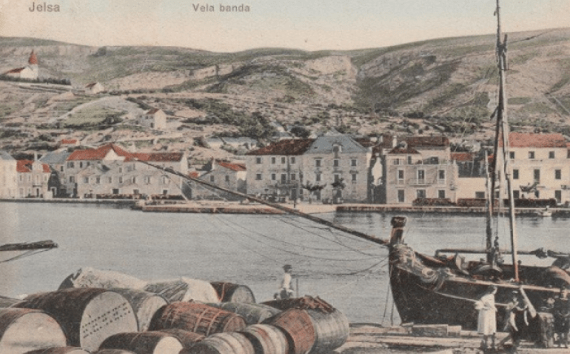
I want to tell you about one guest who rented our place recently. After arriving in Jelsa (and possibly through the information we made available, but not necessarily), he heard that there was a British Master of Wine somewhere near Jelsa, the only one in all Croatia.
With no car, the couple went off in search of the winery of Jo Ahearne MW, but ended up in the wrong village, in Pitve, before finally tracking down the winery in Vrisnik. They were disappointed to find it closed (Jo does tastings by appointment generally, as she is a one-woman band and there is plenty to do elsewhere). I am not in Jelsa at the moment, and when I spoke to my wife that evening, she mentioned that the guests were very keen to taste her Rosina rose in particular. Jo is a good friend of mine and I knew that she was playing with her Posip grapes on Korcula. I messaged her to find out when she was back, and it turned out there was a window before the guests left the island where she could accommodate them. As they had no car, my wife happily drove them to Vrisnik. As for the rest, I leave it to the Facebook comment on Jo's winery's Facebook page:
We did not know anything about the Dalmatian wine scene before coming to Hvar, and was prepared to drink beer and water as we have done on previous occasions. To our great surprise the island of Hvar has an immigrated master of wine in Jo Ahearne (you will only find around 400 masters of wine in the world, it is not like any other college degree), living only ten minutes drive from where we stayed in the beautiful city of Jelsa. We booked a tasting of her bottled wines (two whites, one rose and two reds), and was blown away by the quality of her winemaking. She uses mostly local grape varieties (Posip, Drnekusha and Plavac Mali). This is a totally different ballgame than other wines we have tried in Croatia, and absolutely worth a trip if you are into wine. Drenkusha is for example an indigenous grape found on the island, almost extinct, and in Jo´s hands turned into top-notch rose (which also landed a 90 point rating in the English wine magazine Decanter this July). Thank you for a great visit, we look forward to drink all the bottles that we brought home.
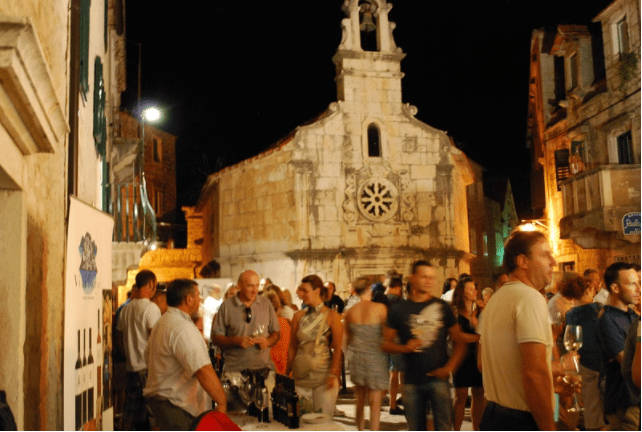
Fantastic, a win all round. Very happy guests, a successful tasting and some money in the pocket of a local business. Bottles purchased to take home and sample, perhaps with friends who could then learn more about Dalmatian wine and its capital.
But the post got me thinking. Everything about the story was 'slucajno' - accidental. The guest happened to hear about the Dalmatian wine scene, then about Jo. The tasting was finally arranged late at night (after 10pm) because the host happened to be a friend of the Master of Wine.
What IF the guests had known about the Dalmatian wine capital before arriving? While Jo is the undoubted star of the Hvar wine scene, there are many other winemakers in and around Jelsa who provide diverse and fascinating wine tasting options. I went into this at some length recently with my concept to brand Hvar as a gourmet destination - The Dalmatian Wine Capital with the UNESCO Mediterranean Diet.

What if instead of Jelsa today is not "branded". Now regarding the type of destination, I'd say it's a reasonably pleasant, family-friendly town, we changed it to the Relaxed Family Lifestyle in the Dalmatian Wine Capital.
"Hey honey, take a look at this place, it looks perfect. It is the capital of Dalmatian wine, with some great tasting experiences. The island's Mediterranean Diet is UNESCO-protected, so I bet the food is healthy and good. This Jelsa place apparently has great beaches, has a chilled lifestyle, great day trips, is very safe, laid back and family-friendly with a great little square for morning coffee and croissants. So lots to do with the kids, and all those indigenous grapes look really exciting to explore. Heck, they even have a British Master of Wine doing tastings of her wines made from indigenous Hvar grapes. What do you say, shall I see if I can find some nice accommodation with a terrace and sea view? It looks gorgeous."
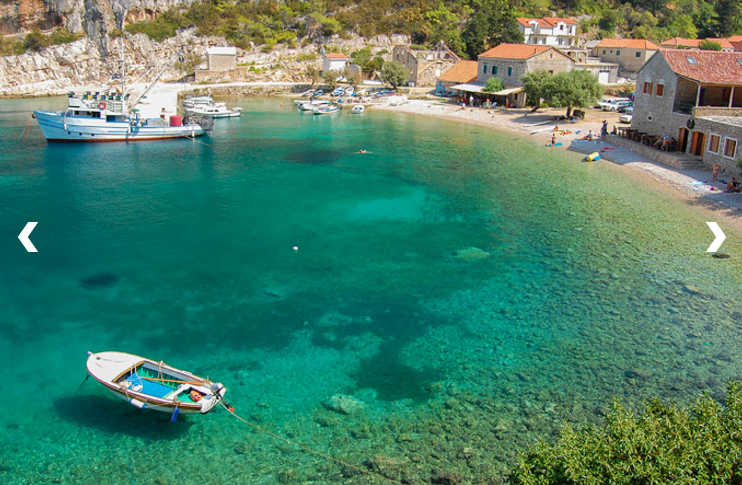
Learn more about the Jo Ahearne MW tasting experience just a couple of kilometres outside Jelsa.
Interested to learn more about Jelsa? 25 things to know about Hvar's (and Dalmatia's) wine capital.
VIDEOS: Chaos on Streets as Summer Storm Rips through Split
August 3, 2019 - When the forecasts projected a change in weather this weekend, they weren’t kidding around. A look at how this summer storm swept through the Split area.
A rumbling thunderstorm with powerful and blustery winds ripped through the Split area around 10 pm on Friday. The air temperature dropped to just 19 degrees Celsius in a short time - for comparison, the highest daily temperature on Friday was 32 degrees Celsius, Slobodna Dalmacija reported.
“It came from the northwest and descended to Dalmatia. The announced front is crossing our area,” confirmed DHMZ in Split on Friday evening.
The highest recorded wind gusts in the Split area were 104 km/h, according to DHMZ.
People were warned not to go outside, and those who found themselves outdoors were asked to seek shelter as soon as possible.
However, on a Friday night in the peak season, we know that’s an impossible ask.
A look at the scenes on the Split Riva on Friday.
"There was panic in the city. The outdoor terraces were cleared within minutes. Guests ran away without paying their bills," one reader told Slobodna Dalmacija.
The storm also turned one building in the Pujanke area of Split into the house of horrors!
At the nearby Star Village of Mosor, Crometeo measured hurricane-like gusts of wind up to 148 km/h!
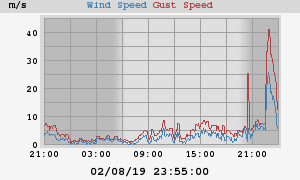
The wind carried garbage containers into parked cars.
And made everyone in the warmth of their homes thankful they chose not to go out that night.
After the storm, the Center 112 received numerous calls from citizens reporting fallen trees on the roads, while some reported that they were trapped in an elevator because some parts of the city briefly ran out of power, reported Slobodna Dalmacija.
Some facilities were left without roofs, and most of the calls came from Split, Solin, and Kaštela.
Many calls for help from the sea were also received Friday night.
“We have a lot of calls, and just in the area of Split we have reports of five accidents, and maybe 20 in the whole Adriatic,” said the Port Authority of Split on Friday. No injuries had been reported on Friday night, though more information will be known on Saturday morning.
The KulaKula festival was also held in Trogir on Friday night in Kamerlengo castle. The storm hit as local favorite Vojko V was on stage. The storm cut out the sound, but Vojko boldly continued his concert in an unplugged version.
However, the storm became worse and started to pick up chairs, umbrellas, equipment, and branches. The audience then began running away from the concert venue, and as one Dalmacija Danas reader said, there was a lot of panic on the way out.
Fortunately, the weather forecast for Saturday is looking much more favorable.

You can follow the weather report here.
To read more about lifestyle in Croatia, follow TCN's dedicated page.
Lies, Damned Lies and Croatian Statistics Said Mark Twain, Kind Of
August 3, 2019 - A deeper look into the tourism statistics in Jelsa on Hvar points to the realities of season 2019 in Croatia beyond the headline numbers.
Statistics are such useful things. On the one hand, they can be used to track progress on things, while on the other, they can be interpreted in certain ways to fit a particular narrative.
And when - as is the case with the Croatian tourism chiefs - the powers that be decide that statistics (and their interpretation of them) will be the biggest barometer of success, then having control of public opinion of the interpretation of those statistics becomes crucial.
And so when the Ministry of Tourism decided to restrict access to the transparent, award-winning, real-time eVisitor statistics reporting system, I was not the only one who was suspicious that there was something 'going on.'
Some people think I am a tourism expert because I write a lot about Croatian tourism. I am not. I am a former male chambermaid turned wine merchant turned aid worker turned English teacher in Japan turned real estate agent turned writer. My first article published online was less than 8 years ago.
My understanding of Croatian tourism is still evolving, and I - like many others - was impressed at the growth of tourism in Croatia. Record number of tourists, record overnight stays. It was all good.
Or was it?
The overtourism debate in Dubrovnik started to spill over to other places on the coast, and somewhere along the way, the charm of the Dalmatian coast (I am referring mostly to the Adriatic coast here, and would also like to point out that little of this refers to Istria) seemed to be getting lost with an ever-increasing influx of tourists on the mainland. Were all these extra tourists a good thing, and were they actually spending to compensate for the inconvenience?
There has been a growing call in recent months for cruise ships to be limited, to have a general rethink on the tourism strategy. This mass tourism strategy is not healthy, and anyway Croatia cannot really compete with the likes of Turkey, Tunisia and Egypt, who are all now back in competition after recent terror attacks. And as there is a severe lack of quality hotels, luxury tourists are looking elsewhere.
But the statistics. If statistics are the thing you have decided to be judged on, then statistics you must deliver at any cost. The quality of the tourism has become less important than the statistics. If Minister Cappelli can announce that last year's record overnights of 106 million (54 million more than in 1990) has been exceeded, then he can officially declare the season a success and a vindication of his 'strategy.'
But is it? Is judging a tourist season by its arrivals and overnight stays the way to measure success? If we all worship at the Temple of Record Overnight Stays and feed it more and more overnights to make the temple bigger, is that what we call success? Or a strategy?
Statistics. As Mark Twain famously wrote, there are lies, damned lies and statistics. Let's take a closer look.
As readers of TCN will know, I have been following the season very closely in my adopted hometown of Jelsa on Hvar this summer. I felt saddened enough by the low-quality tourism that this lovely town is now enduring, while at the same time enjoying a lovely summer - the empty Jelsa of summer 2019 is as nice as I have known it. And if you have not booked a holiday yet, then come! There are some great offers for an affordable holiday, as we will discover below.
The statistics for the 2019 season to the end of July are now finally available, so let's dive in to see how Jelsa is doing, as it seemed so empty in July. And remember, statistics can be interpreted to suit any narrative.
The first surprise in such a seemingly empty destination is that tourist arrivals are actually UP! By 1.44% compared to this time last year. Is this the World Cup dividend finally coming to light?
But then, if you wanted to write a negative narrative, you could say that the overnight stays were down 0.91%
Either way, this is a good season, isn't it? What the hell is that fat, pink Brit complaining about?
Here are the arrivals and overnight stays by country for the first 7 months. In Minister Cappelli's Kingdom of Accidental Tourism, All Overnight Stays are Equal.
As a foreign fly on the wall, I beg to differ. I think that overnight stays from countries who are also going to spend in the bars, restaurants and on tours are worth more than those bringing their own food and drink and looking for the cheapest option to have their summer holiday on the beach. But he is the minister and I am just a blogger, so what would I know.
If we look at the overnights so far, the only countries which are up are from Eastern Europe (big welcome to our friends from Ukraine, up 177%). If we look at who is down, we have Austria (-20%), Norway (-19%), UK (-12%), Italy (-14%). The higher spending East Europeans are also down (Poland and Serbia - 10%).
Not great news for the restaurants.
These are the numbers for July, the month I was documenting - while Norway was down almost 30%, Bosnia was up 12%. We will figure out why in a moment.
If we look at the hotels in Jelsa, they are having a great season - at least the main two are - 15% more arrivals than last year. Great news for Minister Cappelli's spreadsheet.
So who is staying in the hotels, and where are the biggest increases coming from? Ukraine (269% on overnight stays), Slovenia (30%) and Bosnia (20%). It is nice to see that there are 13% more Croatians in Jelsa this year - many complain that the coast is too expensive for them these days, especially islands such as Hvar. So why the big increases in the hotels from places like Bosnia and Ukraine, for example?
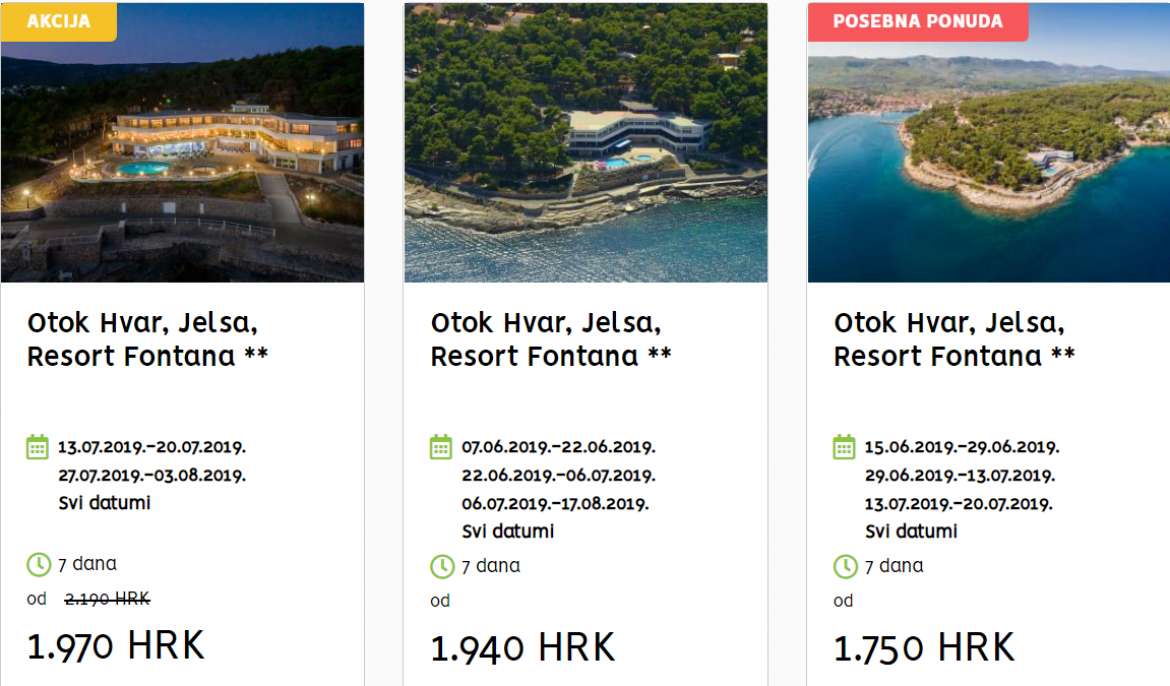
Could it be something to do with price, perhaps? An example of some of the offers for Jelsa hotels being discounted already this summer. In the cheapest offer of them all (available for the first three weeks of July), 2 adults (1,750 kuna each) and one child under 12 (free) could have a week in a hotel room close to the sea and a great beach, with breakfast and dinner, free WiFi and parking for just 3,500 kuna inclusive.
Or 166 kuna per day per person.
That includes the agency fee, taxes, running costs, and all the rest.
Expensive Hvar? Never was it so affordable! We live 100 metres from the hotel and only half-jokingly talked about moving in for a week to save money. A REALLY good value holiday, and with such an excellent beach and everything in the hotel, no need to go and spend downtown. Perhaps on an ice cream for the little one.
In Minister Cappelli's Temple of Record Overnights, All Overnights are Equal.
And just in case you are cursing yourself for missing out on such a bargain, relax. There is still time. It will cost you 39 kuna a day extra now in August, but that family of three can enjoy magical Jelsa for just 205 kuna a day. Book here. 21 more overnights for the hallowed spreadsheet.
How is it going in private accommodation? Up with East Europeans, down with Germany, Austria and Norway.
Camping has always been one of Jelsa's accommodation strong points. With several camps within walking distance of the catamaran, it is the perfect place for camping tourists to base themselves when coming to Hvar.
Not this year.
Perhaps the most surprising - and alarming - statistics are in this table.
After 108 years of tourism in the town, nobody still has any idea what Jelsa's brand is. Most people talk about it being a family destination. More a destination for old people and teenagers these days it seems, rather than young families and parents aged 25-44.
So what have we learned?
Jelsa is extremely good value, with bed, breakfast and dinner available even today from 205 kuna per person per day. Tourists from the region are taking advantage of those offers and then staying within the hotels, while the traditional higher-spending guests from places like Germany, Austria and Norway are going elsewhere, which is leaving the restaurants and the town considerably emptier.
It is the worst kind of tourism Jelsa could have, but Minister Cappelli will be able to preach from the pulpit at the Temple of Record Overnight Stays about how well Croatian tourism is doing.
Just make sure you don't ask him to explain the World Cup tourism dividend.
In this era of manipulated information, some will cry Fake News. Others will not believe something unless they see it. A quote from my recent blueprint to improve Jelsa tourism, Some Simple Steps to Improve Jelsa's 2-Star Tourism Strategy on Hvar.
I posted quite a few of these on my Facebook wall (apologies to my FB friends) because I wanted to document the reality when the inevitable will happen when the statistics are announced. We will be blinded by science and spreadsheets about numbers and overnights. Those Ukranian 21 overnights will cover up the real situation to save some ministerial embarrassment. As the hotels are filling with low-cost half-board tourists, the restaurants are complaining that the higher-spending guests, such as Norwegians, are a lot less this year. Does 21 Ukrainian half-board overnights equal 21 Norwegians in private accommodation and eating in the restaurants and drinking in the bars? For the spreadsheets, they are the same. For tourism revenue to Jelsa businesses, I would put the ratio at 21:3.
For the more visual types, a selection of videos of Jelsa's tourist season in July, shot at different times of the day. I am sure Minister Cappelli can only see packed tables and a main square Full of Life.
July 8, 2019. 19:25
July 8, 2019. 20:45
July 8, 2019. 22:00
Jelsa, 18:45, July 13
19:45, July 13
21:00, July 13
21:45, July 13
July 16, 2019, 20:35
July 16, 22:55
July 20, 12:30
July 20, 12:40
July 20, 19:10
July 20, 2019 at 21:00
July 21, 20:30
July 21, 20:40
July 21, 22:40
July 22, 19:35
Carpe Diem Swaps The Yacht Week for Hvar Wine Tasting Afternoons
July 30, 2019 - As Hvar moves its tourism story away from the party, is a new service from Carpe Diem the biggest symbol of change in the new direction? Meet Taste Croatia, Carpe Diem style.
A few months ago, I met and interviewed Petar Razovic, the new Hvar Town Tourist Board director, who had been in the position just over a year. I had assumed it would be just another standard interview listening to the same old stories, but there was something different about Razovic and his vision for Hvar. You can read the interview here.
He seemed determined to reset Hvar's tourism strategy away from the cheapening party destination it had become and more towards the elite destination it had been until fairly recently. With party boats jumping on the bandwagon of the infamous Yacht Week, it was sad to see the change that was occurring. Symbolic of that for many were the after beach parties at Carpe Diem, where up to 500 drunk 'sailors' would cram in for a party from 17:00 to 20:00, before being sent out to 'explore' the town, before heading out to Carpe Diem Beach at midnight to party until dawn.

Razovic, the town authorities and Carpe Diem have been in discussions as to how better manage the situation, so that the party can exist side by side with the rest of Hvar tourism, as it had done before. The Yacht Week was moved to the Pakleni Islands and reduced to just five times a month, and security guards would oversee the orderly departure to Carpe Diem Beach at Stipanska by night, and an orderly arrival early in the morning. When I stayed in late June (admittedly not the peak season), the system was working well, as you can see from my experience of a night in Hvar Town: Hvar Town, a Changing Destination: A View from Hotel Adriana Terraces.
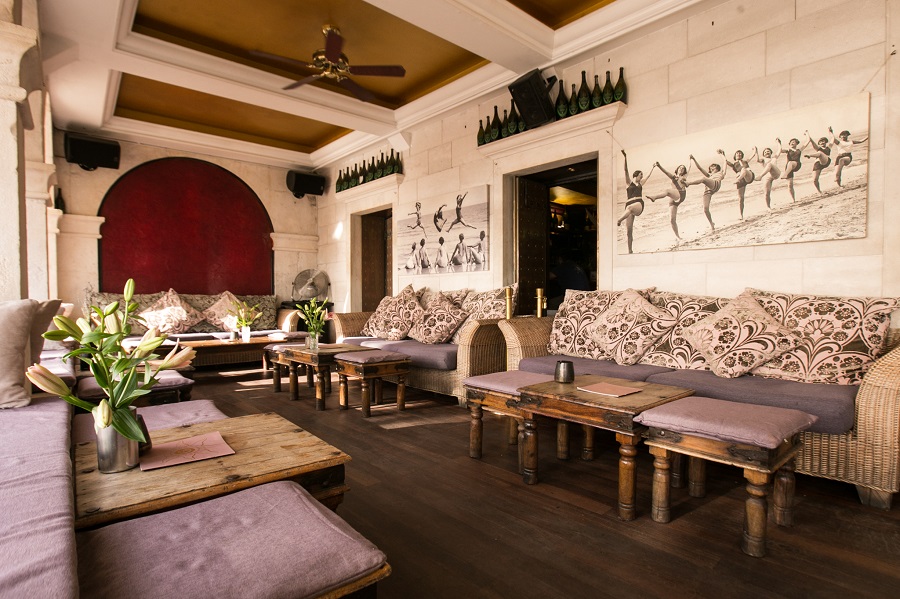
The oldest public theatre in Europe reopened after 20 years, the first luxury 5-star hotel on the island is due to open in a few weeks, it seemed that Hvar was really taking concrete steps to change. Rome was not built in a day, but the wheels were certainly in motion.
And then THIS!
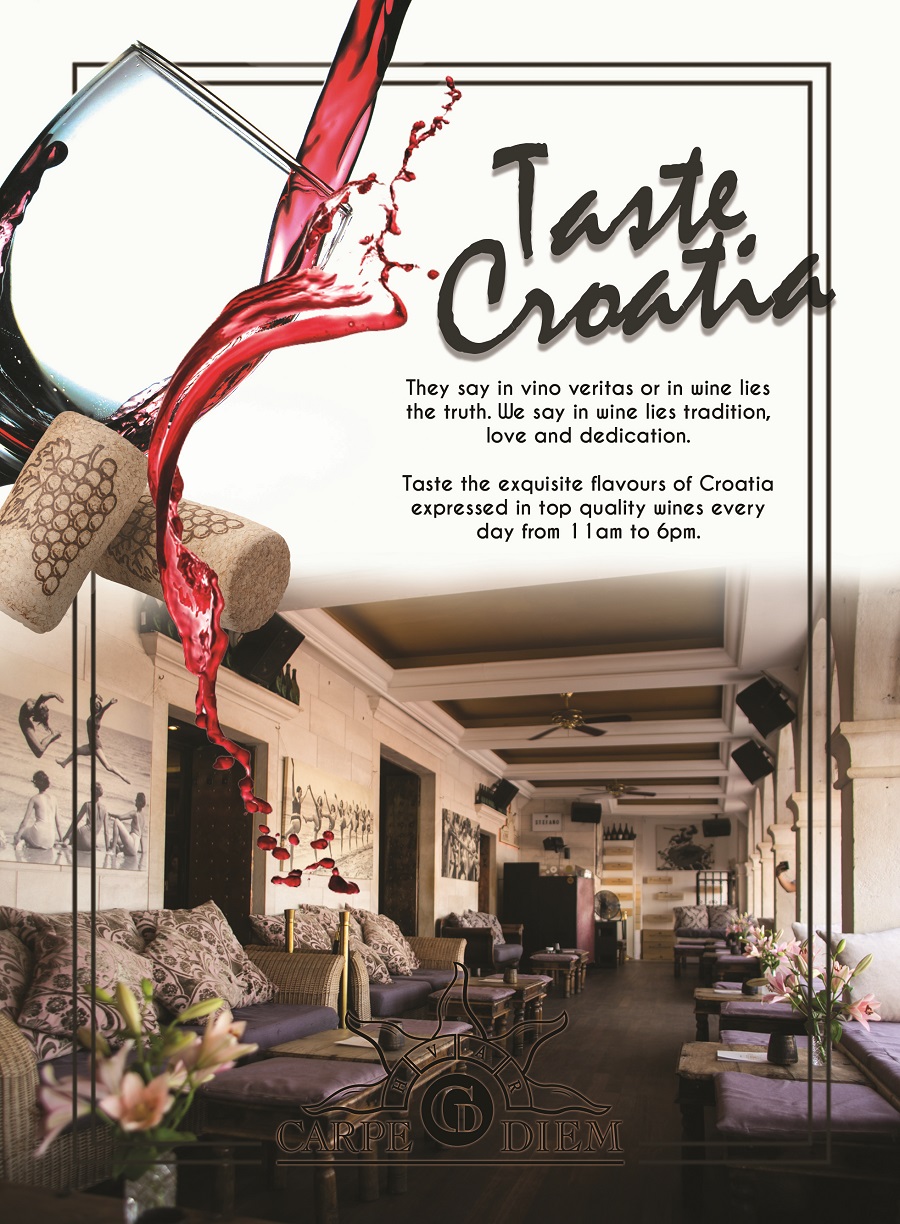
A new concept from Carpe Diem during the day, promoting the quality wines of the island (and, I think, also the rest of Croatia) - Taste Croatia.
Less on the daytime party, more on the gourmet quality, and a chance to learn more about the fine wines of the island and beyond. The wines will also be available for purchase - an ideal Hvar souvenir.
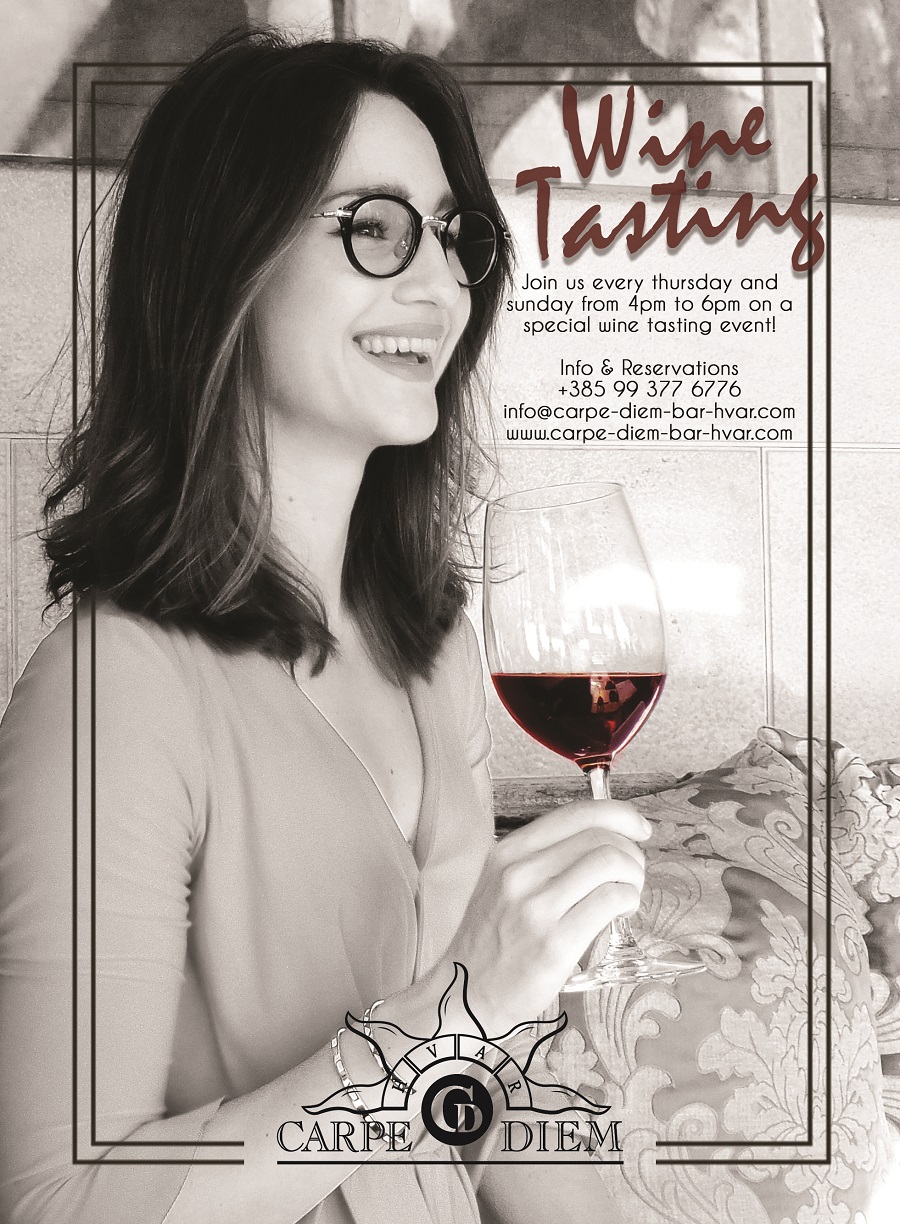
Come on Thursdays and Sundays from 16:00 to 18:00 teach week for a special wine tasting event. Details for reservations in the flyer above.
So there we are, one more step in the right direction, and an excellent platform for Hvar's excellent winemakers to impress visitors to Hvar Town.
Perhaps now is the time to say thanks for the memories, Ultra Europe, but we need to keep working on our brand?
To learn more about the potential of Hvar as a food and wine destination, Creating Quality Gourmet Tourism in Croatia: Case Study Hvar.

